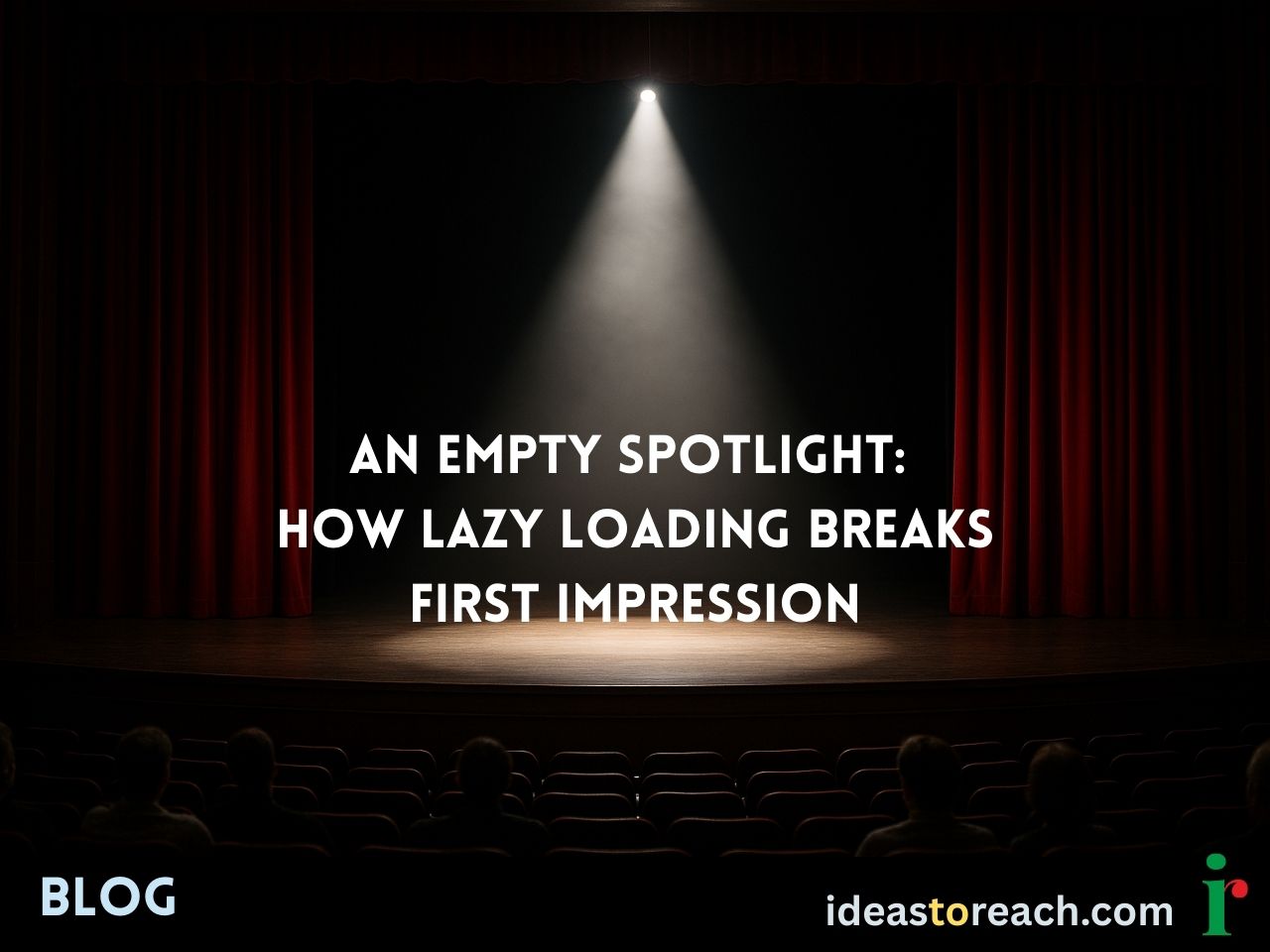
Picture this: you click on a website. The headline pops up, the menu bar is ready… but the big image at the top of the page takes a moment to appear. That short delay makes the page feel slower than it really is.
This is exactly what Largest Contentful Paint (LCP) measures, the time it takes for the biggest visible element to load. The faster it appears, the better the user experience and overall page experience.
But here’s the twist: a popular performance trick called lazy loading, meant to make websites faster, can actually delay your LCP if it’s applied the wrong way. And if you don’t address it, even the most unique strategies to stand out in SEO won’t make up for a poor first impression.
Normally, when you open a web page, the browser loads everything upfront, every image, even the ones far below that you may never scroll to. That can waste time and data.
Lazy loading solves this by giving developers a choice:
“Only load what’s on screen right now. The rest can wait until the user scrolls down.”
And that’s the key, it’s a choice. Developers or CMS platforms decide which images get lazy loaded. If the wrong elements are chosen, like your hero image, banner, or top headline section, it backfires. These are the very elements people expect to see first. When they’re delayed, your LCP score takes a hit.
LCP is about how quickly the most meaningful content appears on screen. In most cases, that’s the banner image, hero section, or a large heading.
When those elements are lazy loaded, here’s what happens:
On fast Wi-Fi, this delay might go unnoticed. But on slower networks or mobile devices, it becomes obvious, and frustrating.
Think about an ecommerce store. If the first product image or hero banner is lazy loaded, the shopper sees text before the product. It feels broken, like the store didn’t bother to show what it’s actually selling. That’s a missed opportunity in both user experience and sales.
Even Google’s own experts caution against this. Martin Splitt has explained that lazy loading images which appear immediately on screen will almost always hurt your LCP, because the browser is told to wait on the very element people came to see first.
And there’s another issue: if your hero image doesn’t have defined width and height, the page layout may suddenly “jump” when it finally loads. That hurts another Core Web Vital, Cumulative Layout Shift (CLS), making your site feel unstable.
In short, a technique designed to improve performance can easily work against you if applied to the wrong elements.
And the problem doesn’t stop at speed, lazy loading can also confuse search engines.
Some outdated lazy loading methods hide image URLs inside custom attributes like data-src instead of the standard src or srcset. To a user, the image may look fine once loaded. But to Googlebot, which reads the HTML, that image may not exist at all.
That means your page might appear complete to visitors but incomplete to Google. If your most important image isn’t indexed:
A site that “looks fine” can still fail silently in search performance.
Before you blame lazy loading, it’s worth checking whether it’s actually causing issues. Here’s how:
If you haven’t read our detailed guide on Largest Contentful Paint (LCP), it’s worth checking out, it breaks down how Google measures LCP and why it’s a ranking signal you can’t ignore.
Lazy loading is a valuable tool for site speed optimization, you just have to use it smartly. Here’s the balance:
Lazy loading isn’t the villain, it’s a powerful ally when used wisely. The problem begins when it’s applied blindly, especially to the content that defines your first impression.
Remember, LCP is one of Google’s key page experience signals. Along with things like how stable your layout is and how quickly users can interact, it plays a role in both user satisfaction and search rankings. That means fixing lazy loading issues isn’t just a technical tweak, it’s part of building a faster, more reliable website that Google rewards. Even small adjustments, like making sure your hero image loads eagerly, can make a big difference.
The rule is simple:
Think of lazy loading like a personal assistant. It’s great at handling background tasks, but you should never let it keep the VIPs waiting. In web performance terms, your VIP is the hero content. Get that right, and both your users and Google will see your site as fast, stable, and trustworthy.
Or to put it in one line:
Lazy loading is a great servant, but a terrible master.
Yes, lazy loading delays important above-the-fold images, making the page appear slower and increasing LCP.
Never lazy load above-the-fold images including hero images, banners, product showcases, main headlines, and any content immediately visible when the page loads.
Run your page through Google PageSpeed Insights to identify your LCP element and check if your hero image has loading="lazy" in the HTML code.
Load above-the-fold images right away; lazy load only images below the fold with proper size attributes.
Yes, lazy loading impacts mobile performance more severely due to slower networks making delays more noticeable and mobile users expecting instant visual feedback.
PageSpeed Insights shows immediate improvement; real user data appears in about 28 days; rankings may take 2–3 months.